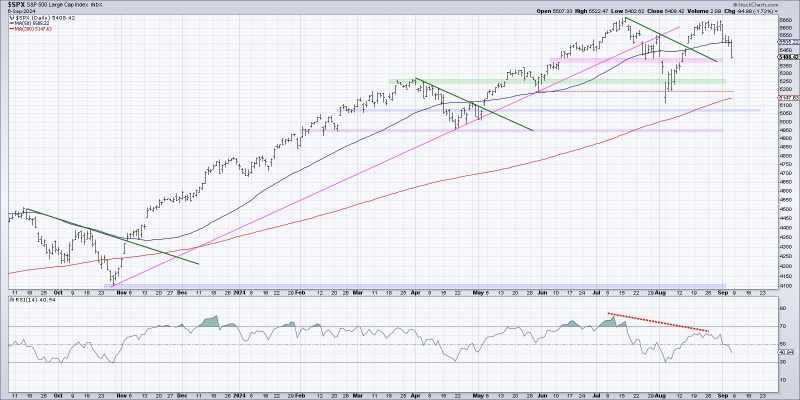In the article Three Charts Screaming Market Top by GodzillaNewz, the author highlights three key charts that point towards a potential market top. Let’s delve deeper into each of the charts mentioned and analyze their significance in identifying market trends.
### Chart 1: Valuation Metrics
The first chart focuses on various valuation metrics that indicate overvaluation in the market. One of the key metrics mentioned is the price-to-earnings (P/E) ratio, which is a widely used indicator to assess the relative value of a stock or the overall market. A high P/E ratio suggests that investors are paying a premium for each dollar of earnings, signaling a potential market top.
Additionally, metrics like the cyclically adjusted price-to-earnings (CAPE) ratio can provide a longer-term perspective on valuations. When the CAPE ratio is well above historical averages, it may suggest that stock prices are inflated and due for a correction.
Investors should pay close attention to these valuation metrics as they can provide valuable insights into the current market conditions and help in making informed investment decisions.
### Chart 2: Sentiment Indicators
The second chart focuses on sentiment indicators, which gauge the bullish or bearish sentiments among investors. High levels of optimism, often seen in extreme bullish sentiment indicators, can be a contrarian signal that the market is overheated and due for a pullback.
Common sentiment indicators include the Investor’s Intelligence Bull/Bear Ratio, Put/Call Ratios, and the VIX (Volatility Index). These indicators can help investors gauge the prevailing market sentiment and identify potential turning points in the market cycle.
Monitoring sentiment indicators alongside other fundamental and technical analysis can provide a holistic view of market conditions and assist in making well-informed investment decisions.
### Chart 3: Market Breadth
The third chart examines market breadth, which assesses the participation of individual stocks in a market rally. When a narrow group of stocks is driving the market higher while the majority of stocks are lagging, it may signal a lack of broad-based strength and vulnerability in the market rally.
Market breadth indicators such as the Advance-Decline Line and the percentage of stocks above their 200-day moving averages can help investors assess the health of the overall market and identify potential divergences between price action and underlying market breadth.
By analyzing market breadth indicators, investors can gain insights into the sustainability of a market rally and anticipate potential shifts in market dynamics.
In conclusion, the three charts presented in the article provide valuable insights into various aspects of market analysis, including valuation metrics, sentiment indicators, and market breadth. By paying attention to these key indicators, investors can better navigate volatile market conditions and make well-informed investment decisions.


































